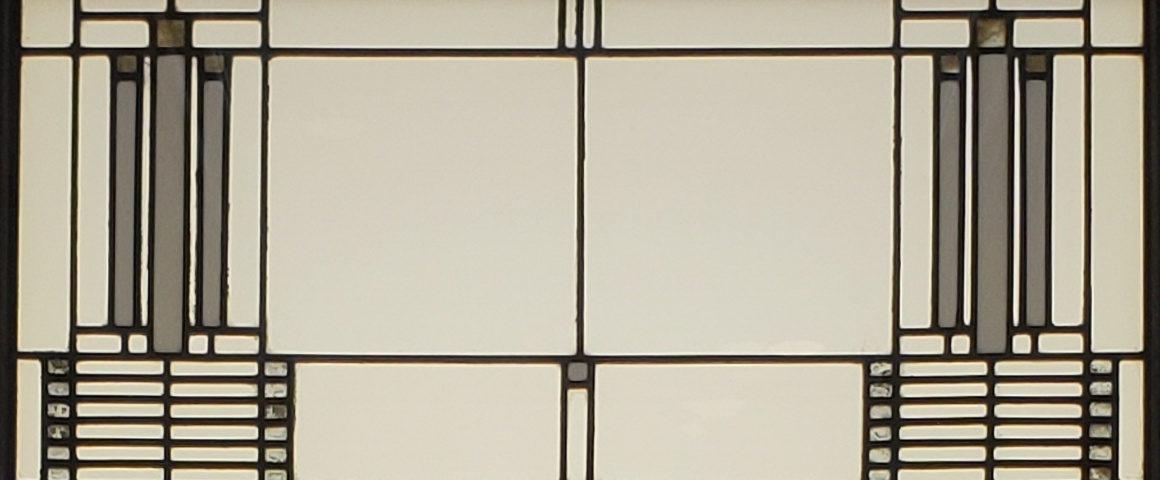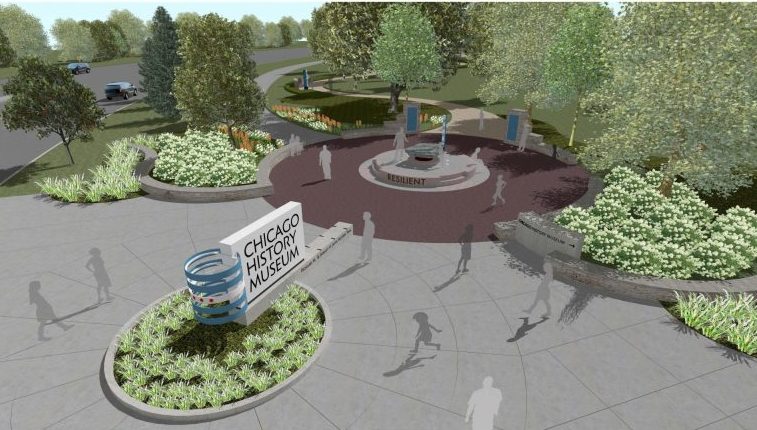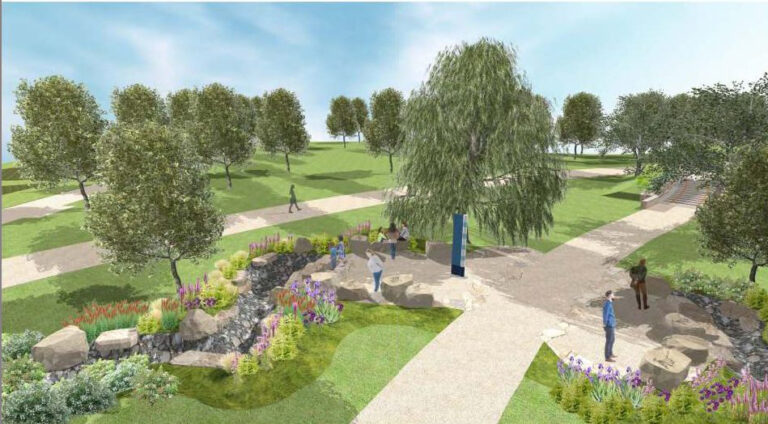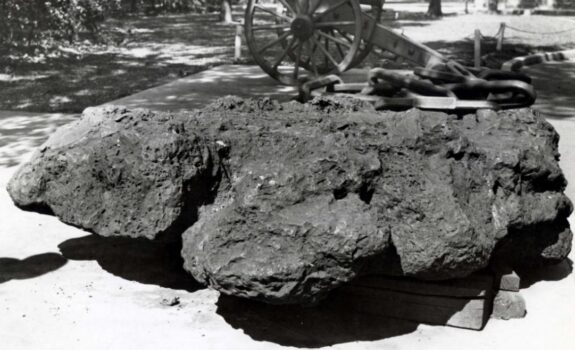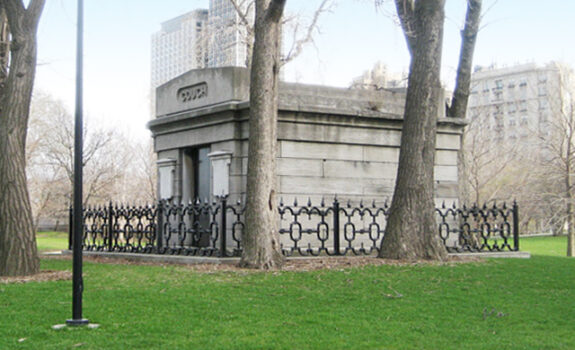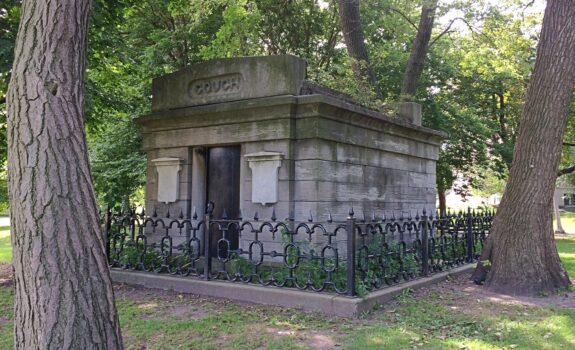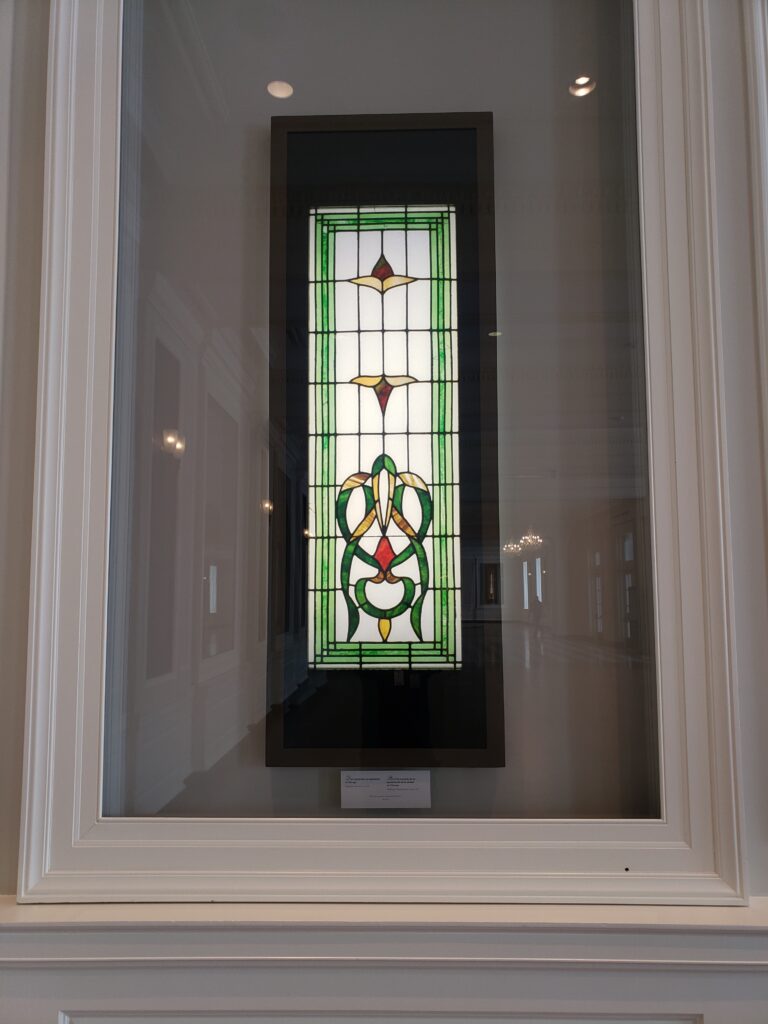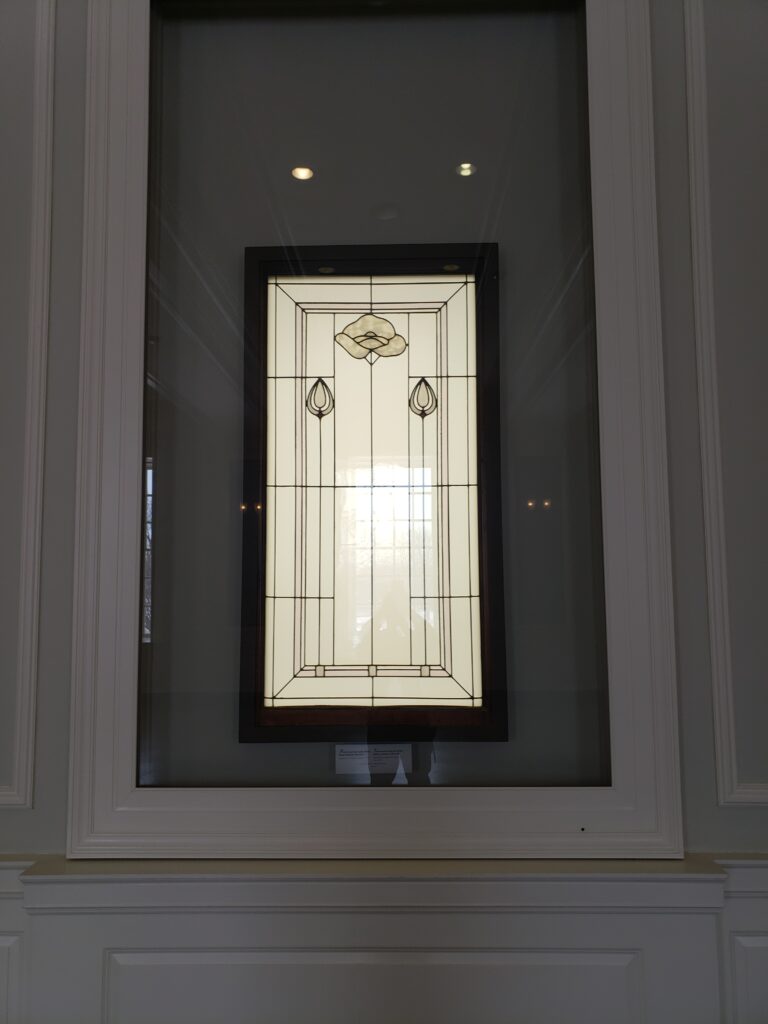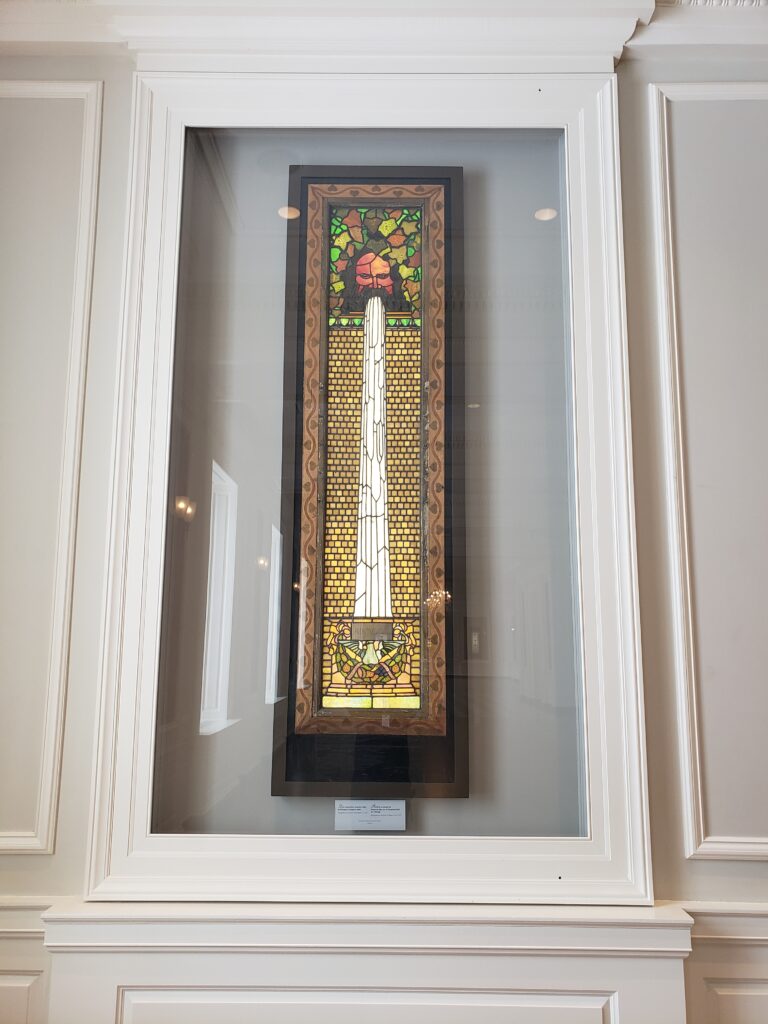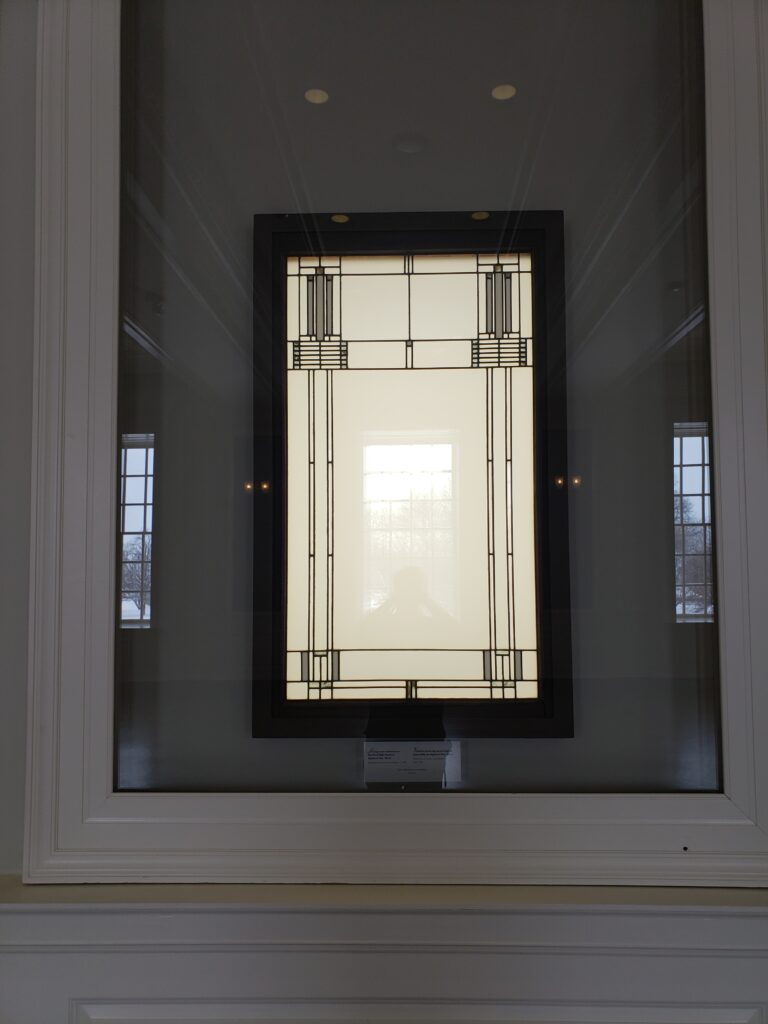
The Chicago History Museum had a problem.

Their back plaza and surrounding parkland, which also served as the ceiling for their archives and storage facility, was old and needed a major renovation. The 30 year old structure, beneath the corner of North Avenue and Clark Street, had worn down and was leaking water into the 23,000 linear feet of archives and manuscripts.
So it was decided to not only weather-proof the plaza but also add the Jaffee History Trail, an interactive walkway that will feature eight stops that tell stories about Chicago while highlighting the city’s resilience and complexity. Features include:
The Chicago Fire Relic
This innocuous blob was discovered in 1890 during construction at State and Randolph, previously the site of Hall & Kimbark’s “Ironware House”. During the Chicago Fire of 1871, the store’s stock of iron bars melted into the stone and brick of the building, creating this fragment of history. It was acquired by and relocated to the museum grounds in 1921, where it sits today.
The Coach House
One of the only remaining hints to south Lincoln Park’s original history as the Chicago City Cemetery. It’s not definitively known why this tomb remained after the cemetery and graves were relocated, but it seems likely surviving family thought it too expensive to relocate. In 1899, the Lincoln Park Commissioners wrote “…it would be impossible to remove the vault, except at great expense, and the Commissioners preferred to allow it to remain as an interesting reminder of the Park’s origin.”
NOW, ABOUT THAT PROBLEM
Soon after groundbreaking, it became clear the vibrations from the construction were going to put the museum’s extensive collection of stained glass at risk.
With pieces designed by Louis Tiffany and Frank Lloyd Wright among the many, the collection is the pride of both the museum and the city. But quite a few are compromised in some way due to age, wear and environmental circumstance, so it was essential they be removed and protected without altering the exhibits. That’s where we came in!
Armed with high-resolution photographs and an extensive knowledge of backlit applications, we recreated each piece down to the signature. Starting with a thorough color-match process, we used our eco-friendly HP R2000 latex printer to print backlit film that was then mounted to .25” clear acrylic, finally iCutting each piece to its exact shape and size. Side-by-side comparisons were a draw, and each piece passed the eye-test with flying colors!
As that particular phase of the construction ended, the originals were put back on display in their rightful places, the reproductions discarded. History was preserved during an unavoidable transition, and a link to Chicago’s unique character remains intact.
We were honored to be a part of conserving and protecting our local history. Whether your art needs creating or re-creating, let our expertise help bring your ideas to life.

